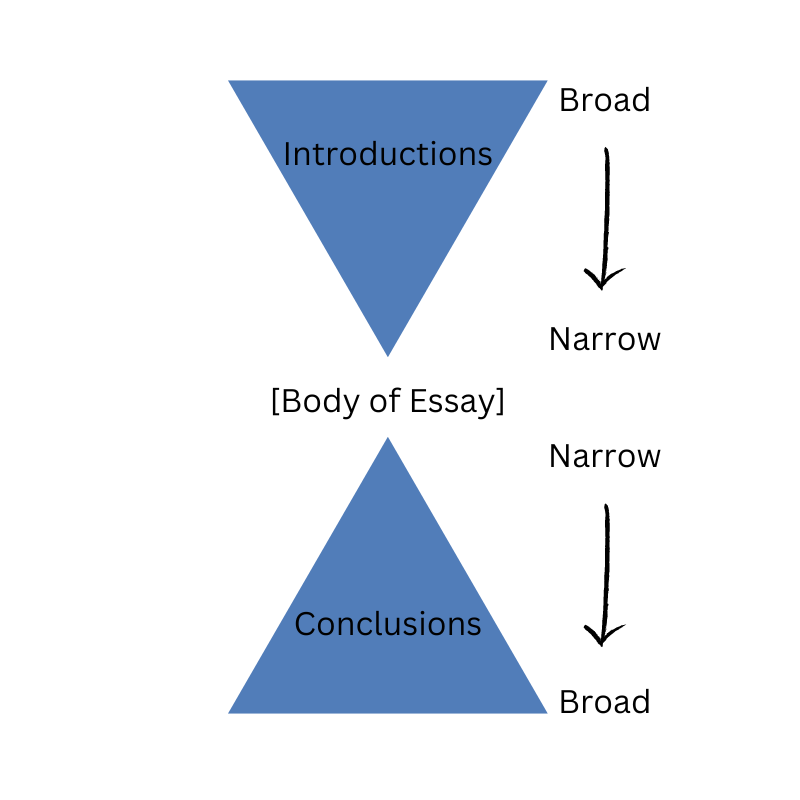Introductions and Conclusions
Introductions
Broad to Narrow: One of the best ways to think about introductions is that you are taking something very broad and moving into a very specific argument. Say your paper is about the history of female pirates, you could start with a broader statement about the importance of women in maritime history, and then move towards your specific thesis at the end of the introduction. However, keep in mind that starting too broad, with statements such as “since the beginning of time” won’t help guide your reader because they don’t know your starting point. Remember that it is best practice to place your thesis at the end of your introduction!
Give the basic details: You will want to give some basic details in your introduction. For example, if your paper is an in-depth analysis of a specific book, you will want to talk about the title, author, and publication year. Or if it is a research paper about a specific biological process, you will want to give a basic definition of the process, even if you go into further depth later.
Just Jump Right In: If the blank page stresses you out, like it does for many people, try setting a timer for 5 minutes and writing without picking up your pen from paper (or fingers from the keyboard). It is easier to revise a messy introduction than write a perfect introduction on the first try. So just start with something, whether it’s a catchy phrase, a hot take, or a factual statement about your topic, or whatever sounds good to you.
Conclusions
Restate Your Thesis: Even though it might feel redundant, it can be very useful to your reader to restate your thesis in different words. It serves as a reminder that you accomplished your goal and completed your argument sufficiently.
The “So What?”: Once you have restated your thesis, it can be useful to tell your reader why your argument was important. Let’s continue with our female pirates example, in your conclusion you could talk about how it is important to uncover lesser-known histories so that modern day women in the maritime industry can find inspiration. It can help to ask yourself why you wrote about this topic in the first place, why are you passionate about it?
Anything Else to Know?: If you are writing a research paper it can be useful to your reader to bring up anything that you felt wasn't covered in your research, or an angle of exploration that you think could be interesting for another researcher or scientist to explore. For example, in a research paper about the efforts to stop climate change you might have noticed that scientists hadn't consulted indigenous people about their ideas and methods, and you think that should be explored in the future. Think about this part like a tidbit for your reader to keep them interested. Sort of like "well if you thought my paper was cool, check out this whole other area that I didn't even cover!"
Narrow to Broad: The two points above lead well into a discussion of the overarching goal for many conclusions, which is to do the opposite of the introduction and go from narrow to broad. By starting with restating your thesis, you are capturing the specificity of your argument, then by moving into a “so what” you are bring it back into a broad conversation about the importance of your topic.
